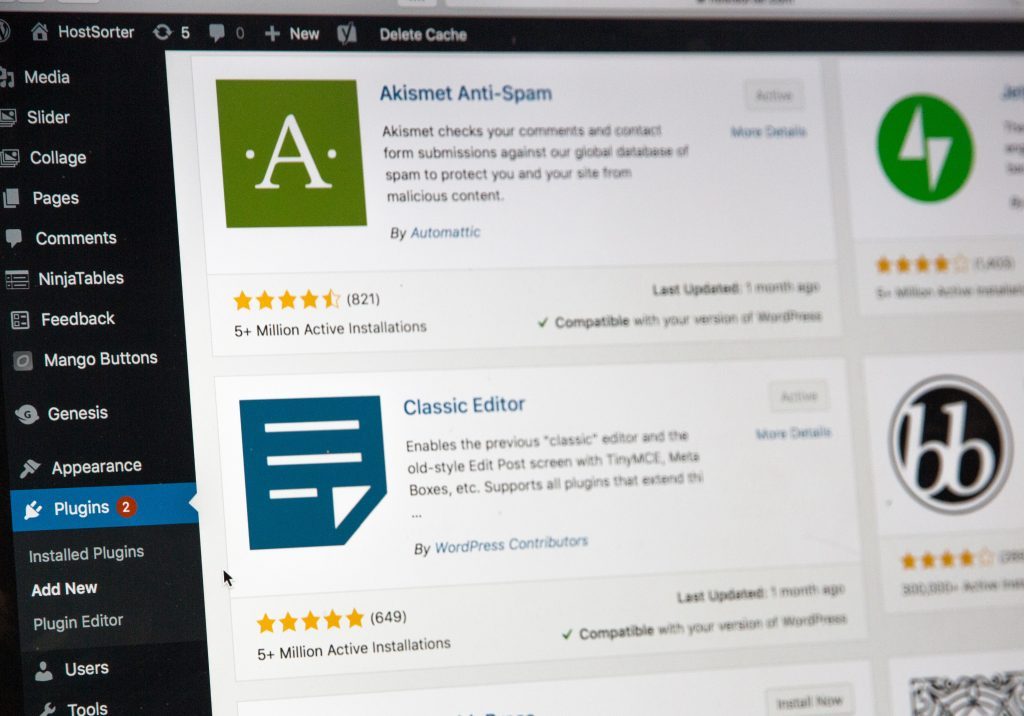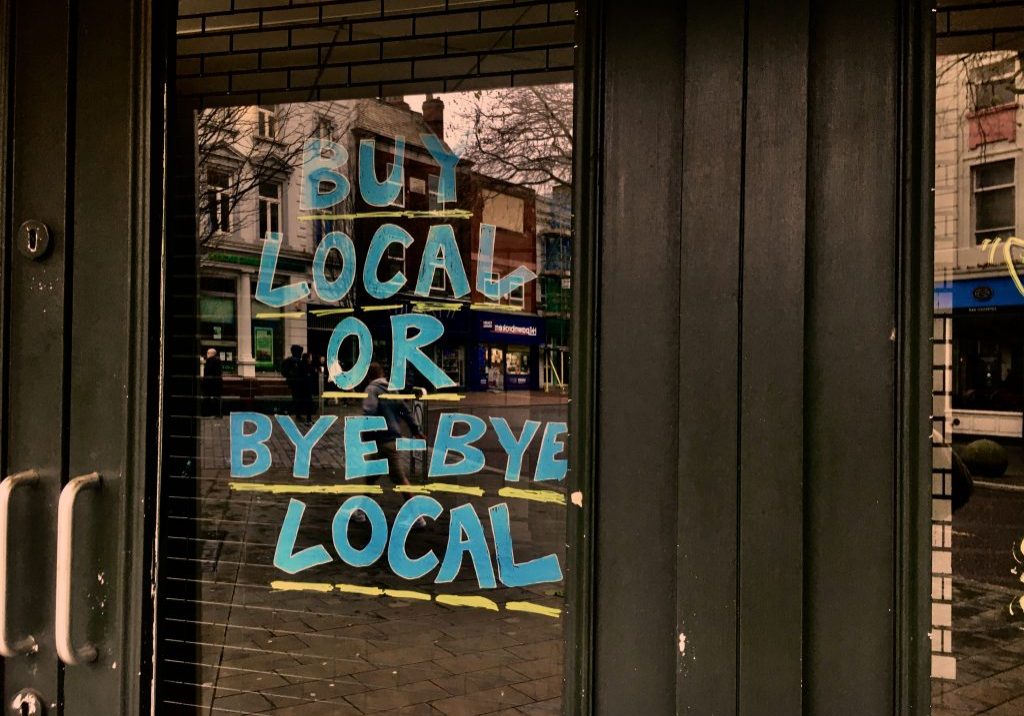Set Your SEO Face To Stun…
Before we get started, we’ve got to point out that, at Convert Digital, we’re major SEO fans, so we’re bound to be just a little bit excited about any mind blowing stats we can get our hands on. That said, some of these 19 shocking SEO stats are just that; shocking. In a good way, of course.
We’ve compiled a list of statistics that should get your digital marketing departments juices flowing, as well as a few ideas and opinions on how best to work with the information, from strategy pointers to industry insights. Hopefully, after you’ve finished reading, you’ll be a little more switched on to SEO and a lot more focussed on how and where you’re going with your strategy.
Here we go:
General SEO Statistics
93% of all online activities start with a search engine.
We may be stating the obvious with this one but; if your site isn’t indexed and showing in search engine results pages it needs to be! With 93% of all online activities starting with a search engine, it’s clear that at least some basic SEO will help boost your site traffic, which is why you should make this a priority. Here’s a few steps you could take to get started:
- Submit your website to Google Search Console
- Optimise Meta Tags and descriptions
- Optimise home page copy for one specific keyword
Search engines generate 300% more traffic for websites than social media.
Don’t get us wrong, we’re big advocates of social media, which is the perfect, mass market channel for upper funnel marketing, helping to launch a new brand or generate some product awareness. That said, we’re really at a loss as to why so many businesses put their entire growth focus into social media, which can be speculative at best, when they could be targeting high value terms, with buyer intent.
Search engines generating 300% more traffic than social media is a big thing in itself, which highlights most business’ need to prioritise SEO, but it’s when you think of the quality of traffic that search engines produce over social media that this stat really hits home.
We recommend building your digital marketing strategy around SEO, targeting keywords that users may search with at every stage of the purchasing journey. Alongside this, you could generate supporting content for social media, which not only drives your marketing message home, but also provides continuity for would be customers.
14.6% of SEO-generated leads are converted into sales.
Another win for SEO, 14.6% of SEO generated leads are converted into sales. Great stuff, but that doesn’t mean you should get complacent.
Again, think about your product or service and map out a complete funnel, from the initial point of contact, right through to purchase or enquiry. Using this map or ‘journey’ you can tailor your SEO strategy to suit, creating content that connects at every stage, helping increase your conversion rate further. If you’re unsure what we mean, here’s an idea of content we’d create to target new clients looking for PPC services;
- 10 Ways To Generate Leads Online
- What Is PPC?
- Which Is Best PPC or SEO?
- How To Find The Right PPC Agency
As you can see, each of these blog posts would connect with users at different stages in their purchasing decision, with the idea being that we’d educate and inform them, helping to build awareness and gradually inching users closer to conversion.
51% of all website traffic comes from organic searches.
Another self explanatory stat; if you’re not maximising organic search then you’re missing out on roughly half of your overall traffic potential! This is more proof that, whilst other channels may be in vogue, SEO will always be number one in most, solid digital marketing strategies.
70% to 80% of users completely ignore paid advertisements.
This one really got us! 70-80% of users completely ignore paid advertisements! PPC plays a major role in most strategies, especially if you’re launching new products or services that don’t yet have any online presence, but it’s worth keeping in mind that you’ll never reach your full potential without SEO.
In most cases, we recommend a digital marketing strategy that combines both SEO and PPC. Consider relying heavily on ads in the early stages of your marketing, to bridge the gap, whilst your SEO efforts take shape. Remember, even the best SEO can take several months to make an impact.
Should I Switch Off My PPC When My SEO Is Working?
We get asked this all the time and obviously, it’s tempting to reduce ad spend on PPC; such as Google and Bing Advertising, especially if you’re seeing a rise in organic traffic. We usually lean on the side of caution, reducing PPC spend gradually to monitor the overall affect on conversions across all channels as, it’s often said that the two; SEO and PPC are mutually reliant.

75% of searchers never click past the first page of results.
The best place to hide a body is on the second page of Google. Frankly, we’re shocked that the number of people who never click past the first page isn’t higher than 75%
If you’re devising an SEO strategy it pays to have a mindset of ‘page one, or nothing’, with this in mind, we recommend highlighting your high volume, high potential keywords that are currently languishing on page two or three of search engine results. With a concerted effort you should (in most markets) be able to push some of these to page one, resulting in a boost in traffic and conversions.
Conversely, it’s also worth looking at lower competition keywords, which could reach page one much quicker, especially if you’re in a competitive market.
Only 5.7% of pages will rank in the top 10 search results within a year of publication.
If SEO was easy everyone would be doing it! Keep in mind that, despite your best efforts, results can take a fair amount of time.
When putting together your digital marketing strategy factor in the dead space between working on SEO and any changes you may see and utilise other channels to fill the gap. Launching a new product? Get it online today. Got some new services to share? Publish the copy as soon as possible.
In the meantime, make use of PPC to get an immediate traffic boost, as well as social media which can help drive speculative traffic to your new, optimised pages.
Oh and don’t forget the good practice of requesting indexing for your pages whenever you create or update them.
The average page in the top 10 is 2+ years old.
Surely you’re getting the message by now; good SEO takes time!
When you’re putting together an SEO strategy it pays to look at your existing rankings if you have a site that’s not brand new. Check URL’s as there may be some that are already ranking for keywords without much content; these are prime pages for updating, maximising affect.
If you’re working with a brand new site, as we’ve already said, consider integrating paid ads, such as Google Ads to create an instant traffic source whilst working on your SEO.
92.42% of keywords get ten monthly searches or fewer.
Keyword research will help you determine how much traffic you could generate, if your SEO strategy goes to plan. Whilst it can often be tempting to target the 7.58% of keywords that bring in massive traffic, it pays to think a little outside the box; super niche, long tail keywords can be less competitive and more highly converting.
Using tools such as Google’s Keyword Planner or aftermarket options such as SEM Rush, you can plan the keywords you want to rank for. As we’ve mentioned, it’s worth looking for keywords that, despite only have 10 or fewer searches per month, have good potential and low competition. For example; ‘Digital Marketing’ may have 1000+ searches per month and, of course we’d love to rank #1 for that term, but ‘Digital Marketing Agency In Sheffield’ has way less searches but is much closer to what we do and what sort of clients we’re looking for.
12.29% of search queries have featured snippets in their search results.
Featured snippets can help your website ‘jump the queue’ in organic results by featuring it at position one, if it can trigger them, of course.
Whilst it’s nice to have featured snippets in your results, after all, they can at the very least push competition further down SERPs, they’re not the be all and end all of SEO, as, in some cases they can actually garner less clicks!
If you do want to win featured snippets, it’s good practice to include relevant schema on your pages, which will help your website communicate more easily with search engines.
The #1 result in Google’s organic search results has an average CTR of 31.7%.
If there’s one statistic that outlines the importance of persevering with your SEO, it’s this one.
Sure, your first goal should always be to rank on Google Page One for relevant keywords, which will pretty much guarantee traffic and, in turn, leads or enquiries, but it doesn’t mean you should stop there!
When you’re working on your SEO strategy, be sure to monitor results on a regular basis (we recommend at least monthly), to see if there are any keyword changes you could capitalise on. Whilst it’s always good practice to be confident in your convictions and stick to the plan, working towards long term keyword ranking, it can also be prudent to adapt your strategy if you’re so close to a top spot in SERP’s.
For example, our long term strategy is to rank for keywords around SEO and Digital Marketing, however, along the way, we’ve realised that we’re picking up traction for Facebook Advertising terms too (something we’re always happy to do), which has meant that we’ve incorporated this into our ongoing work. It would be daft to ignore such low hanging fruit!
At the very least, you’ll want to be keeping an eye on Google Search Console information, which will give you a basic overview of your keyword rankings, including the ones you’re working on and others which you may have never thought of.
Another thing to keep in mind, based on this statistic is that (as we’ve mentioned earlier) it’s sometimes better to be in position one for a low competition keyword than position 7 for a high competition keyword. When drawing up your keyword ideas think about potential suffixes you could use, such as area specifics or service features.
Local SEO Statistics
As many as 46% of all Google searches are local.
Local SEO has it’s own elements and should be treated as a standalone strategy in most cases. To maximise your local SEO potential there are a number of key elements (the basics) you’ll want to work on;
- Accurate NAP (ideally in your website footer)
- An Accurate Map
- Up To Date & Accurate Local Citations
- Locally Focused Content & Pages
- Local Business Schema On Site
30% of all mobile searches are related to location.
These days, most websites are optimised for mobile, right out of the box, especially if you’re using a platform such as WordPress. If you’re isn’t, optimising for mobile needs to be at the top of your to-do list, to make sure you capitalise on any local search on mobile.
If your website is mobile friendly and includes the basics mentioned above, you’ll not go far wrong when it comes to attracting mobile search users.
76% of people who search on their smartphones for something nearby visit a business within a day.
This is a bit of a weird one as it’s not entirely based on SEO strategy, but it’s still pretty eye-watering; 76% of people who search on their smartphones visit a business within a day. Those are sort of numbers you can’t afford to ignore!
With this in mind, we’d recommend making it as easy as possible for users to navigate to your shop or business, with a clear and concise ‘Contact Us’ page. It may also be wise to include extra information, such as item stock levels, which could be key in driving users to your store.
As part of your wider digital marketing strategy think about including remarketing, such as Facebook ads or Google Display ads, which will be shown to users who have already visited your website. That way, you’ll stay at the forefront of their mind when they’re ready to visit.
28% of searches for something nearby result in a purchase.
Imagine having a marketing channel where over one in four people purchase! With Local SEO, you have.
Again, make sure your website is quick to load and offers as much information as possible, such as stock levels, any relevant sales and click and collect options if possible, all of which will help you bump up those conversion figures.
“Where to buy” + “near me” mobile queries have grown by over 200% from 2017–2019.
Local SEO is here to stay, so it’s important that your strategy takes this into account. Whilst targeting terms such as ‘Near Me’ and ‘Where To Buy’ could be a little clunky (and not entirely necessary, as Google is more sophisticated than that) you should think about ‘hyper-localising’ your content.
Area pages are a great way to attract traffic from local search, especially if you’re in a niche. If we’re working with small businesses, or sole traders for example, we always look at the service areas they cover in depth. Think past the obvious ‘in Sheffield’ for example, to boroughs or wards, which, sure, will have less search volume, but should be easier to monopolise.
If you’re not sure what we mean, here’s an example;
Painter & Decorator in Sheffield: A pretty generic, high volume term which would be ideal for a business to reach #1
Painter & Decorator in Hillsborough: A much more niche, low volume term, which would also be ideal for a business to reach #1 (With much higher conversion rates!)
Mobile SEO Statistics
52.2% of all website traffic worldwide comes from mobile phones.
It’s 2021, if you’re not getting the fact that your website needs to be mobile optimised then there’s no hope.
A solid SEO strategy should always start with technical SEO, which includes optimising your site. WordPress (and out of the box builders such as Squarespace and Wix) all offer easy to use mobile features.
There are more searches on mobile than on desktop.
This is a pretty obvious one too, these days everyone is on their phone (sorry we sounded like our dad then) which should, in part, drive your SEO strategy.
We’re not going to labour the point about mobile optimisation, you’ve got that bit already, but think about your wider digital marketing strategy and how mobile and desktop work together to drive conversions.
If you’re in a market that sells high ticket products or services are users really going to convert on mobile, in one visit? Does your SEO strategy factor in the different elements of the purchasing journey, which should be accessible on both desktop and mobile.
Consider using paid ads to keep in touch with mobile search users who may need edging down your sales funnel.
On average, ranking in position #1 on mobile gets you 27.7% of the clicks, whereas ranking in position #1 on desktop gets you 19.3% of the clicks.
This one kind of ties in with the above; mobile search generates more traffic, but may not be the place where conversions happen, depending upon your market. Which is why a solid SEO strategy takes into consideration the afore mentioned customer journey.
Make sure you monitor conversions from organic traffic, with a view to segmenting by device type, this can be useful in identifying any issues or barriers that you may not even know existed on mobile, for example!
The Wrap Up
If you’re not sold on SEO now we don’t know if you ever will be! Some of the stats in this blog are frankly, insane! We hope our insight has helped you formulate a basis for your ongoing strategy which, if well planned and executed will guarantee traffic and conversions.
Honestly, out off all the digital marketing channels, SEO is our clear winner, it provides long term revenue growth and, possibly, the biggest bang for your buck.
If you’re interested in working with us on a killer SEO strategy, speak to our team today and, as always, don’t forget to share this blog using the buttons below!
References:
All stats, facts and figures used in this blog are from the very well respected Small Biz Genius & ahrefs









